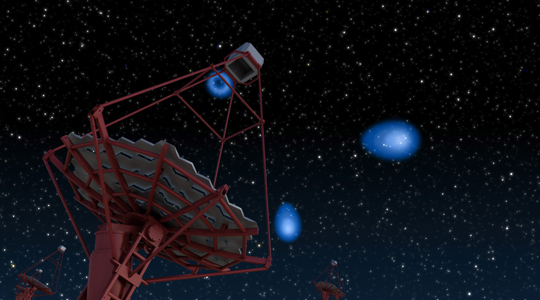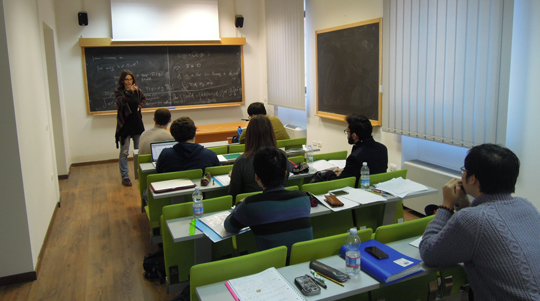GRAVITATIONAL WAVES DETECTED FOR THE SECOND TIME
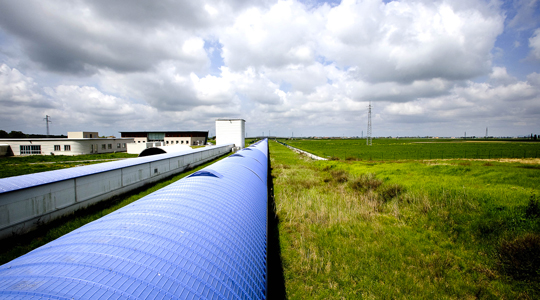 Observation of a second gravitational wave event was announced during a joint press conference by the scientists of the LIGO and VIRGO scientific collaborations, in which INFN is taking part. The tiny ripples in the spacetime fabric, predicted by the General Relativity of Albert Einstein a century ago, have been recorded for the second time, again during the first period of data acquisition, by the twin Advanced LIGO interferometers, in the United States. As with the first detection, these gravitational waves were produced by the merger of two blacks holes, a process that dates back to 1.4 billion years ago. This event nevertheless has different characteristics to the first because the black holes are lighter than those of the previous signal and therefore it was possible to follow the process for a longer period of time, well characterising the system. The waves measured in this second observation refer to the last 27 orbits that the black holes, of mass equal to 14 and 8 solar masses, made while "spiralling down" around each other before merging and forming a more massive single black hole, with mass equivalent to 21 solar masses. The energy released in the form of gravitational waves is therefore equivalent to approx. one solar mass. After opening new scientific horizons with the first historical gravitational wave observation, announced in Febraury 2016, this new measurement confirms that we have truly entered
Observation of a second gravitational wave event was announced during a joint press conference by the scientists of the LIGO and VIRGO scientific collaborations, in which INFN is taking part. The tiny ripples in the spacetime fabric, predicted by the General Relativity of Albert Einstein a century ago, have been recorded for the second time, again during the first period of data acquisition, by the twin Advanced LIGO interferometers, in the United States. As with the first detection, these gravitational waves were produced by the merger of two blacks holes, a process that dates back to 1.4 billion years ago. This event nevertheless has different characteristics to the first because the black holes are lighter than those of the previous signal and therefore it was possible to follow the process for a longer period of time, well characterising the system. The waves measured in this second observation refer to the last 27 orbits that the black holes, of mass equal to 14 and 8 solar masses, made while "spiralling down" around each other before merging and forming a more massive single black hole, with mass equivalent to 21 solar masses. The energy released in the form of gravitational waves is therefore equivalent to approx. one solar mass. After opening new scientific horizons with the first historical gravitational wave observation, announced in Febraury 2016, this new measurement confirms that we have truly entered
the era of gravitational astronomy.
l presskit:
username: comunicazione
password: LVCsecGW




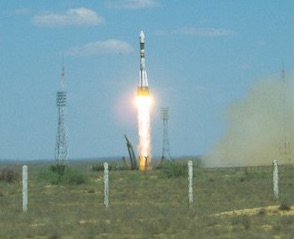 5 June 2016 marked the tenth anniversary of the PAMELA (Payload for Antimatter Exploration and Light-nuclei Astrophysics) satellite detector, the space observatory for the study of cosmic rays, currently in orbit at 560 km above the Earth. Launched in 2006 with a Soyuz rocket from the Baikonur base in Kazakhstan, included on board the Russian satellite Resurs-DK1, for all this time PAMELA has been acquiring data and obtaining fundamental results. The result of an Italo-Russian collaboration also involving Germany and Sweden, the mission is led by INFN and supported by the Italian Space Agency (ASI).
5 June 2016 marked the tenth anniversary of the PAMELA (Payload for Antimatter Exploration and Light-nuclei Astrophysics) satellite detector, the space observatory for the study of cosmic rays, currently in orbit at 560 km above the Earth. Launched in 2006 with a Soyuz rocket from the Baikonur base in Kazakhstan, included on board the Russian satellite Resurs-DK1, for all this time PAMELA has been acquiring data and obtaining fundamental results. The result of an Italo-Russian collaboration also involving Germany and Sweden, the mission is led by INFN and supported by the Italian Space Agency (ASI). 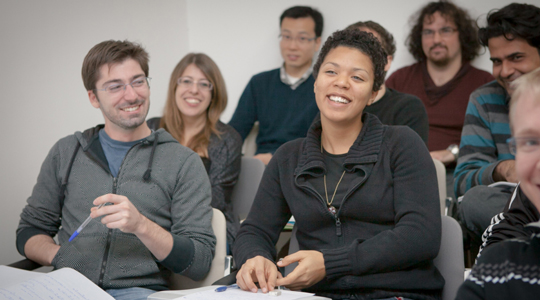 The Gran Sasso Science Institute (GSSI), founded in 2012 in L’Aquila (Italy) as Center for Advanced Studies of the National Institute for Nuclear Physics (INFN) and then established in March 2016 as a new university providing post-graduate education, offers 41 PhD fellowships for the academic year 2016/17.
The Gran Sasso Science Institute (GSSI), founded in 2012 in L’Aquila (Italy) as Center for Advanced Studies of the National Institute for Nuclear Physics (INFN) and then established in March 2016 as a new university providing post-graduate education, offers 41 PhD fellowships for the academic year 2016/17.